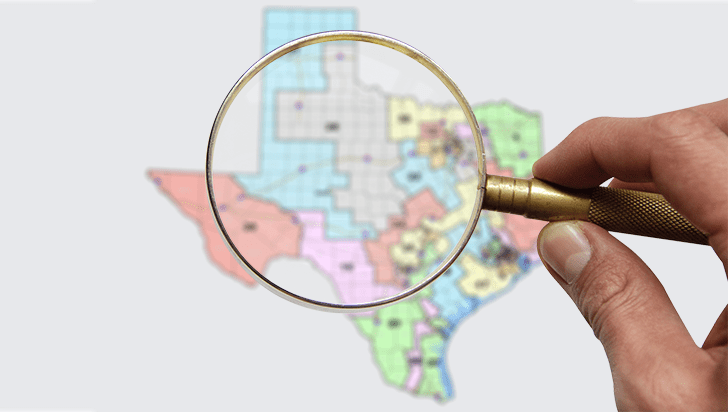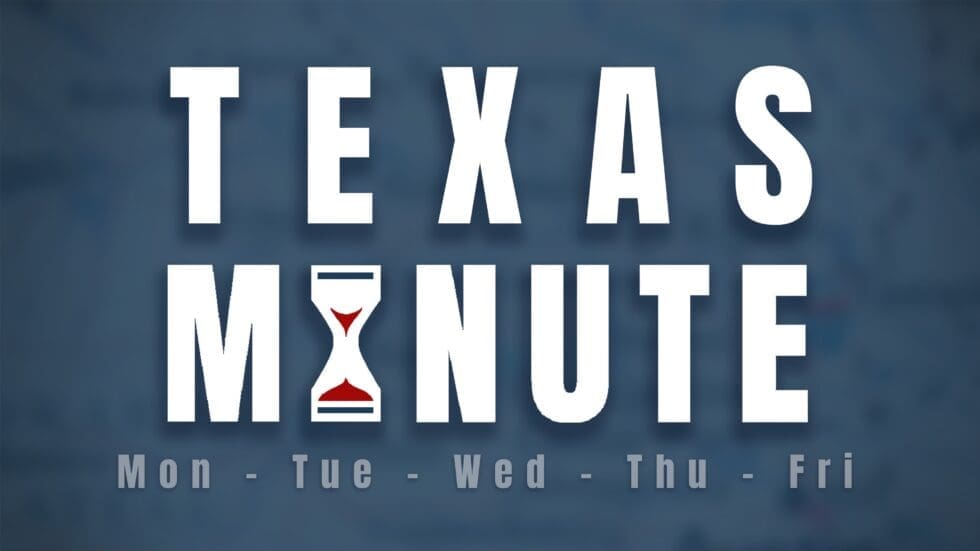Over the weekend, the proposed new Texas Senate district boundaries as a part of the overall decennial redistricting process were officially made public, just as the third called special legislative session was to get underway.
Bottom Line Upfront
The key takeaway from the proposed new districts map seems to be that it generally works to shore up what have previously been competitive districts for Republicans by taking some of the populations from the currently strongest Republican districts and making them slightly weaker, while also reinforcing some districts currently represented by Democrats in their favor.
Theoretically, using previous electoral trends, this would mean that if approved and current political trends hold, it is likely there will be 19 Republicans and 12 Democrats in the state Senate next election cycle. Currently, the political disposition is that of 18 and 13, respectively.
Here are the highlights worth mentioning:
Northeast Texas
The Greater Metroplex Area
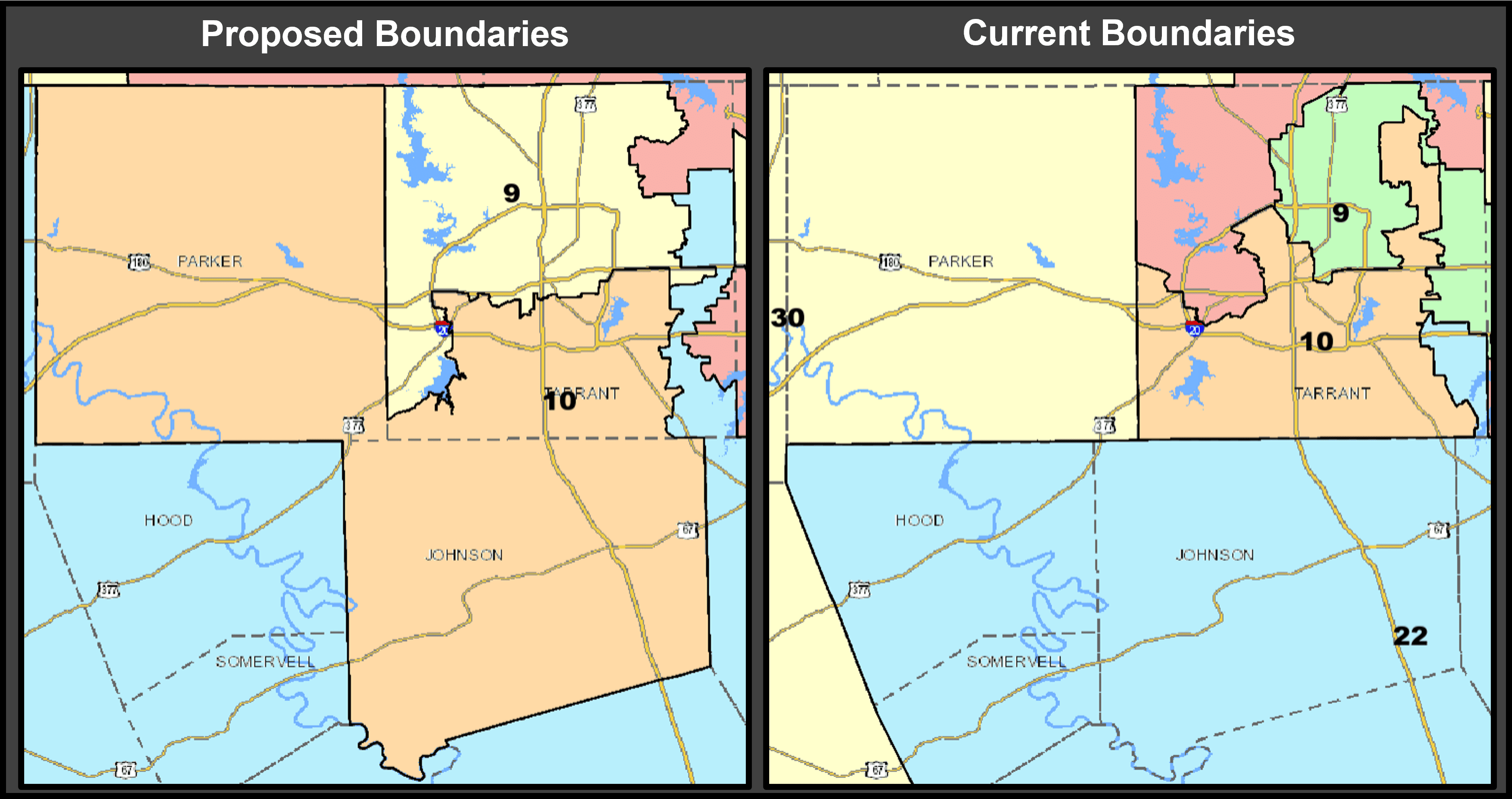
Senate District 10, currently represented by State Sen. Beverly Powell (D–Burleson), is currently located mostly within the southern portion of Tarrant County, with some portions stretching into the northeast part of the county. In the proposed map, the district would add the entirety of Parker County (currently in Senate District 30) and Johnson County (currently in Senate District 22).
This change would make the district much more favorable to Republicans. The district has had both Democrat and Republican representation over the last decade. Republican Konni Burton represented the district between 2014 to 2018, losing to Powell in 2018 by about 10,000 votes. Burton replaced Democrat Wendy Davis, who had challenged Gov. Greg Abbott in 2014.
The same district was a result of litigation over maps from the previous redistricting process.
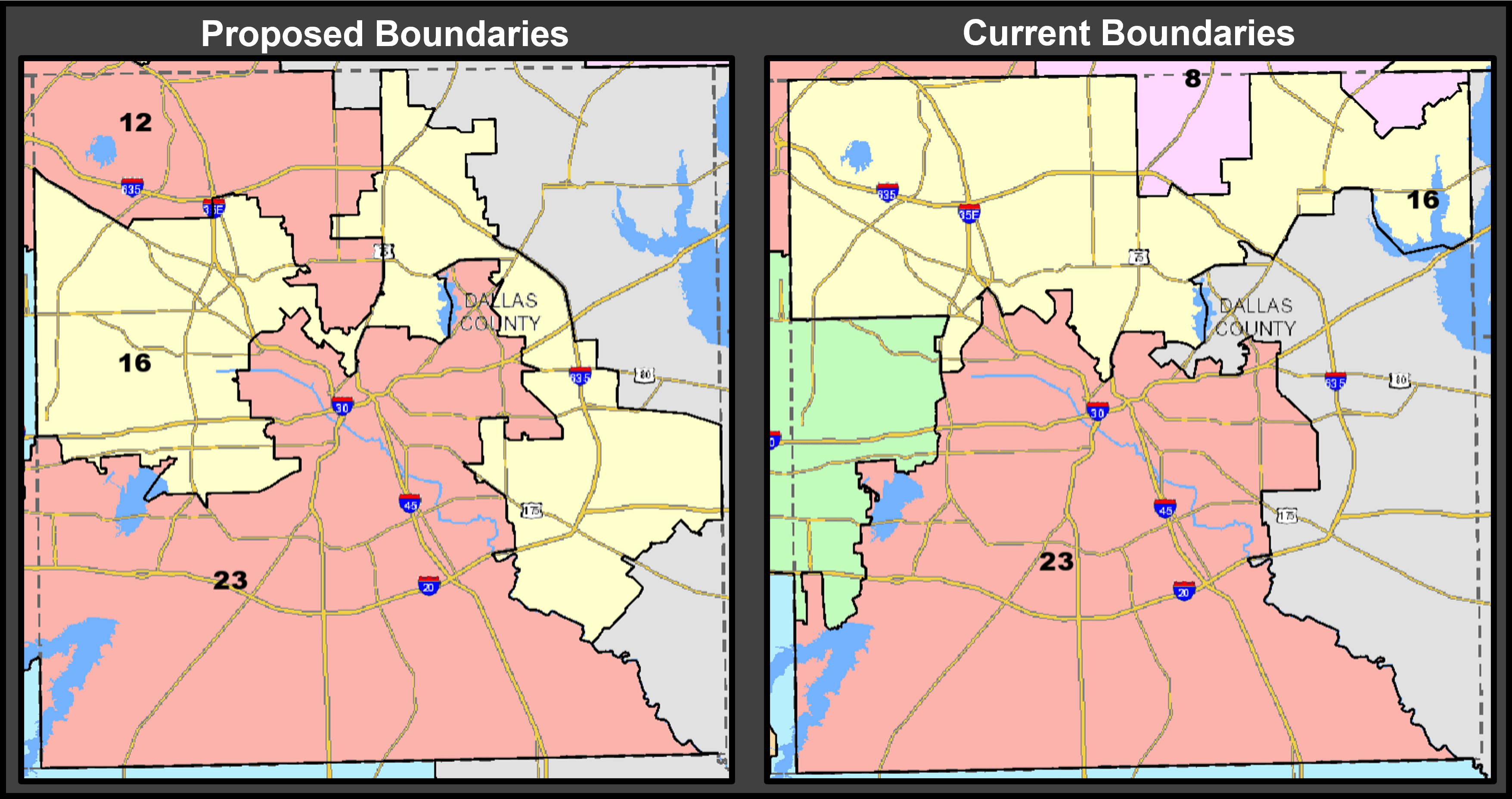
This offset also comes at the expense of Republicans by shoring up another historically competitive district, Senate District 16, in favor of Democrats. Currently represented by State Sen. Nathan Johnson (D–Dallas), the district spans from Coppell to University Park to Rowlett. Johnson beat Republican Don Huffines in 2018 by slightly more than 24,000 votes. In 2014, Huffines beat the incumbent John Carona, a liberal Republican who had held the seat since 1996.
The proposed boundaries of Senate District 16 would now instead stretch from Coppell to portions of Dallas proper to Mesquite, as parts of University Park get folded into Senate District 12 and the cities of Garland and Rowlett become a part of Senate District 2.
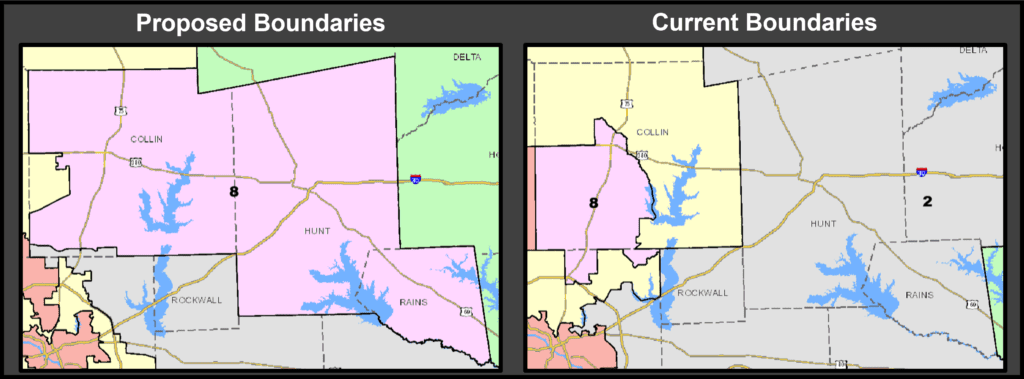
Senate District 8, represented by State Sen. Angela Paxton (R–McKinney), currently stretches from Richardson to Plano to McKinney. Paxton narrowly beat the Democrat candidate Mark Phariss by a little more than 7,000 votes in 2018. In the proposed map, the district would lose all portions of Dallas County and instead be wholly in Collin County (the majority of which is currently in Senate District 30) and Hunt and Rains counties (currently in Senate District 2). These additions work to shore up Republican support in the district.
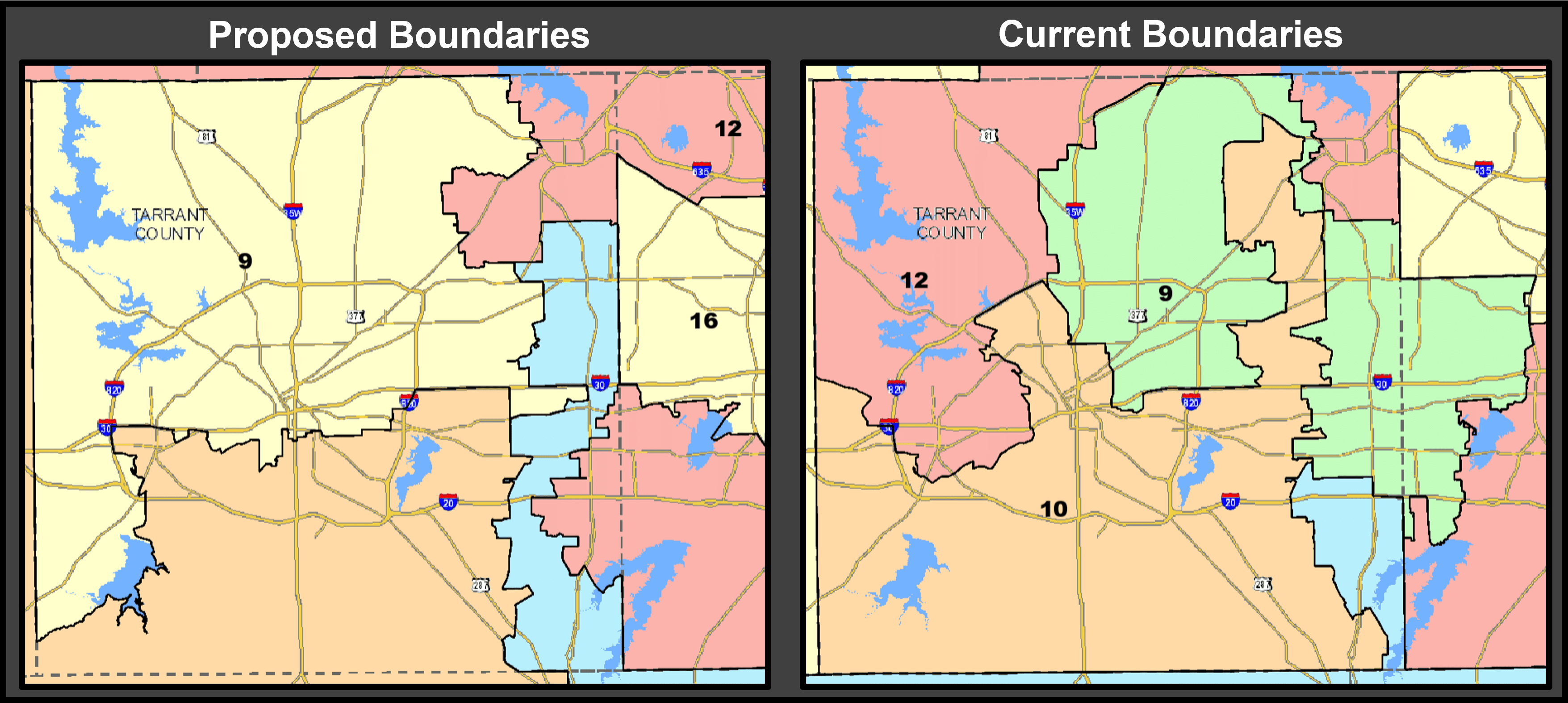
Another competitive district, Senate District 9, currently represented by State Sen. Kelly Hancock (R–North Richland Hills), sees changes that would shore up its Republican support.
The district boundaries currently include Haltom City, stretching north to Keller, surrounding Southlake, stretching south to Euless, and going further into Irving and Grand Prairie. In the proposed map, the district would include more of west Tarrant County and lose the portion stretching into Dallas County.
Hancock won re-election in 2018 by almost 20,000 votes, which is significantly less than his election in 2014, where he defeated his Democrat opponent by almost 42,000 votes.
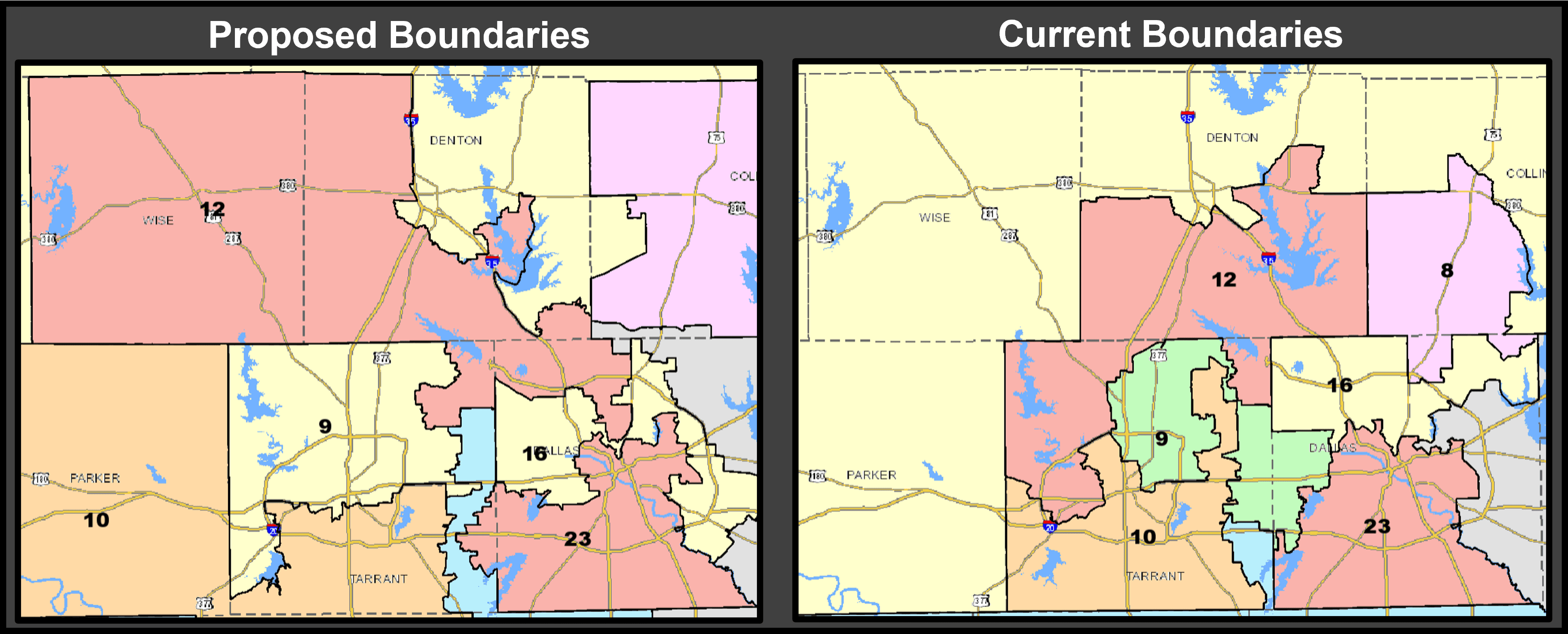
Senate District 12, currently represented by retiring State Sen. Jane Nelson (R–Flower Mound) has proposed changes as well. The boundaries currently exist in portions of Denton and Tarrant counties. The proposed boundaries would instead include all of Wise County (currently in Senate District 30), a larger portion of Denton County, a significantly smaller portion of Tarrant County, and the northwest corner of Dallas County.
Moving South

Senate District 22, currently represented by State Sen. Brian Birdwell (R–Granbury), would have several changes if the proposed map is approved. On top of losing Johnson County to Senate District 10 and a portion of Ellis County and the whole of Navarro County to Senate District 2, it would now extend into a portion of Tarrant County. The district would also add Palo Pinto and Erath counties (currently in Senate District 30) and Comanche and Hamilton counties (currently in Senate District 24).
Central Texas
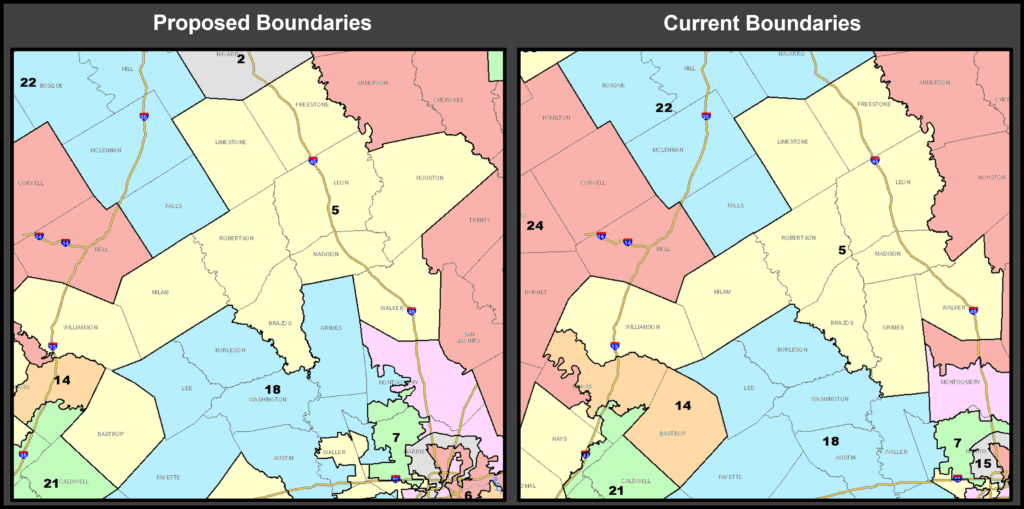
Senate District 5, currently represented by State Sen. Charles Schwertner (R–Georgetown), would add Bastrop County under the proposed map. Bastrop County is currently located within Senate District 14, represented by State Sen. Sarah Eckhardt (D–Austin).
This proposed change would effectively bolster Senate District 14 as solidly Democrat. Senate District 5 would also stretch to add Houston County (currently in Senate District 3).
This change would make Senate District 14 solely within Travis County, with portions of the county itself being shared with Senate District 25 and Senate District 21.
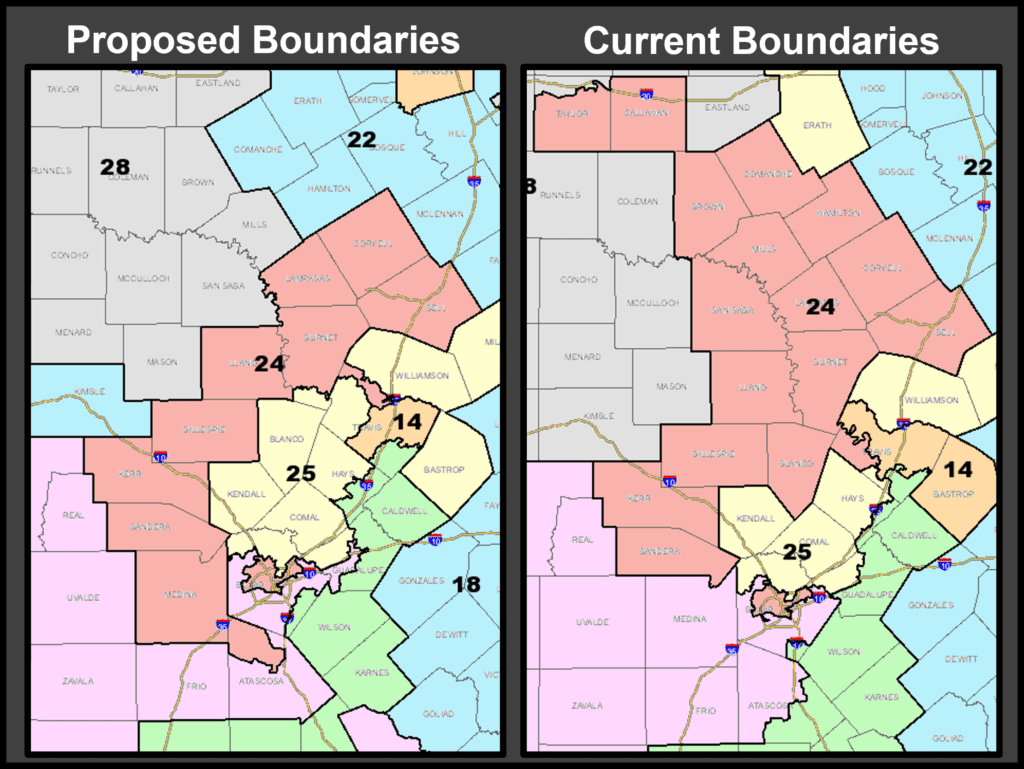
Senate District 24, currently represented by the departing State Sen. Dawn Buckingham (R–Lakeway), is undergoing major changes if the proposed map is approved. The district would lose the portion of Travis County that was previously included. It also would no longer stretch as far northwest as it currently does. Notably, it also would stretch down into Medina and Atascosa counties (currently in Senate District 19).
West Texas
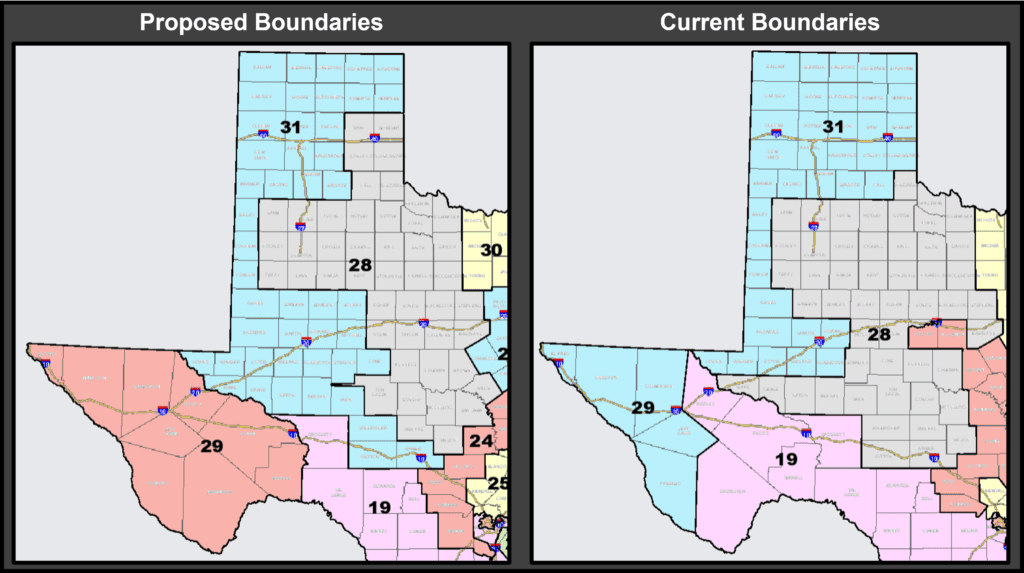
The Panhandle
Senate District 31, currently represented by State Sen. Kel Seliger (R–Amarillo), already boasts one of the largest geographic districts in Texas. The district is comprised of 37 counties, consuming a large portion of the Texas panhandle and covering Amarillo to the west of Lubbock to Midland and Odessa. Those boundaries are extended even further in the proposed map to include a total of 46 counties stretching as far south as the city of Junction. For reference, that is almost 500 miles across, larger than some states.
In contrast, Senate District 28, currently represented by State Sen. Charles Perry (R–Lubbock), currently includes 51 counties stretching from Lubbock to beyond San Angelo. In the proposed maps, the boundaries would be reduced to include only 46 counties, as it loses some counties to Senate District 31 and gains a few from Senate District 24.
Further West Into El Paso
Senate District 29, currently represented by State Sen. Cesar Blanco (D–El Paso), would gain four counties under the proposed map, stretching eastward. It would now include not only the city of El Paso, but it would also stretch to Fort Stockton. These additions come at the expense of Senate District 19.
East Texas
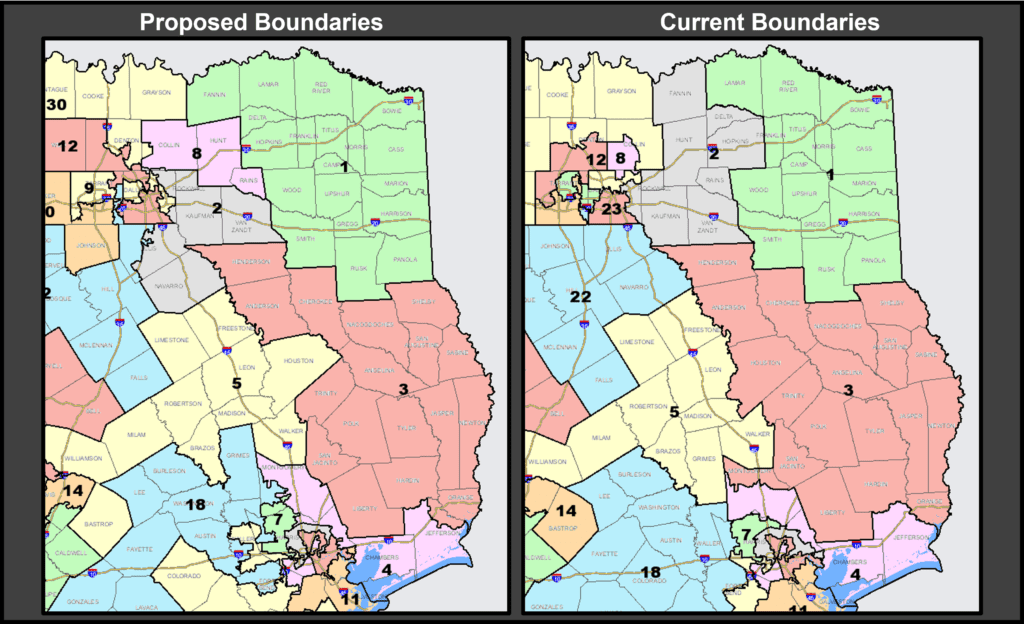
Immediately East of the Metroplex
Senate District 2, currently represented by State Sen. Bob Hall (R–Edgewood), has boundaries that incorporate eight whole counties, as well as a portion of Dallas County. The district stretches from Bonham (near the Texas-Oklahoma border) to Sulphur Springs to Canton to Rockwall and Kaufman. In the proposed map, it loses Fannin, Delta, and Hopkins counties to Senate District 1 and gains a portion of Ellis County and the entirety of Navarro County from Senate District 22.
Along the Louisiana Border
Senate District 3, currently represented by State Sen. Robert Nichols (R–Jacksonville), includes 19 counties within its boundaries. In the proposed map, it loses Houston County to Senate District 5 but picks up the city of Beaumont as a portion of Jefferson County.
Southeast Texas
Greater Houston Area
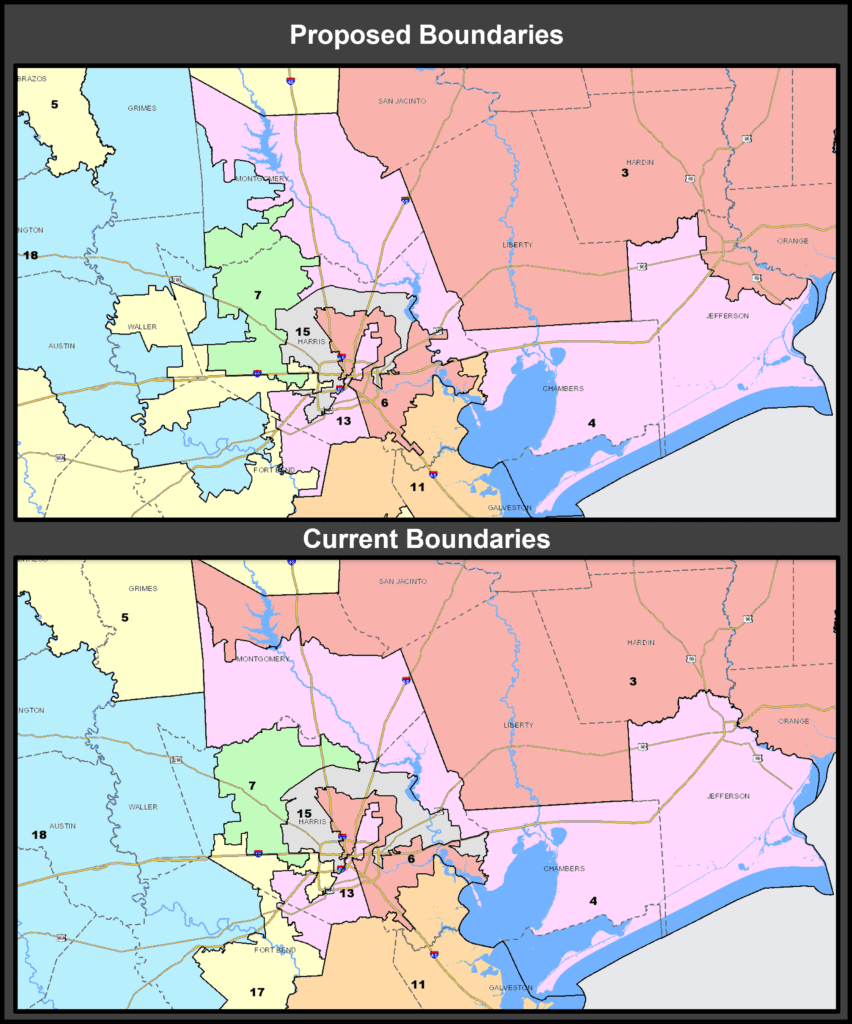
Senate District 7, currently represented by State Sen. Paul Bettencourt (R–Houston), currently contains a portion of northwest Harris County. In the proposed map, its boundaries swap a portion of southwest Montgomery County with Senate District 4, which would pick up the city of Spring.
Senate District 4, currently represented by State Sen. Brandon Creighton (R–Conroe), would lose the western portion of Montgomery County to Senate District 18 in a tradeoff for the bulk of northern Montgomery County. It would the city of Beaumont to Senate District 3 and stretch from Port Arthur to the northeast side of Houston to The Woodlands to Conroe.
The Gulf Coast
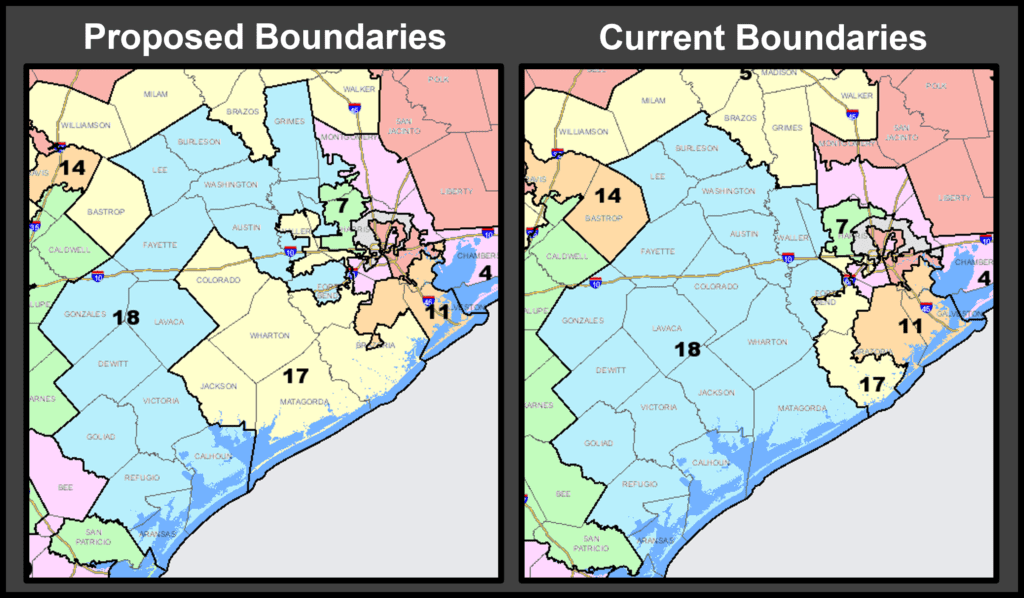
Senate District 11, currently represented by State Sen. Larry Taylor (R–Friendswood), picks up the city of Baytown in the proposed map but loses large swatches of Brazoria County to Senate District 17.
Senate District 17, currently represented by State Sen. Joan Huffman (R–Houston), picks up several counties currently located within Senate District 18: Matagorda, Jackson, Wharton, and Colorado counties, as well as a portion of Waller County.
Senate District 18, currently represented by State Sen. Lois Kolkhorst (R–Brenham), includes counties stretching from north of the city of Houston to San Antonio, before going south towards the coast. In the proposed map, the geography is much smaller.
South Texas
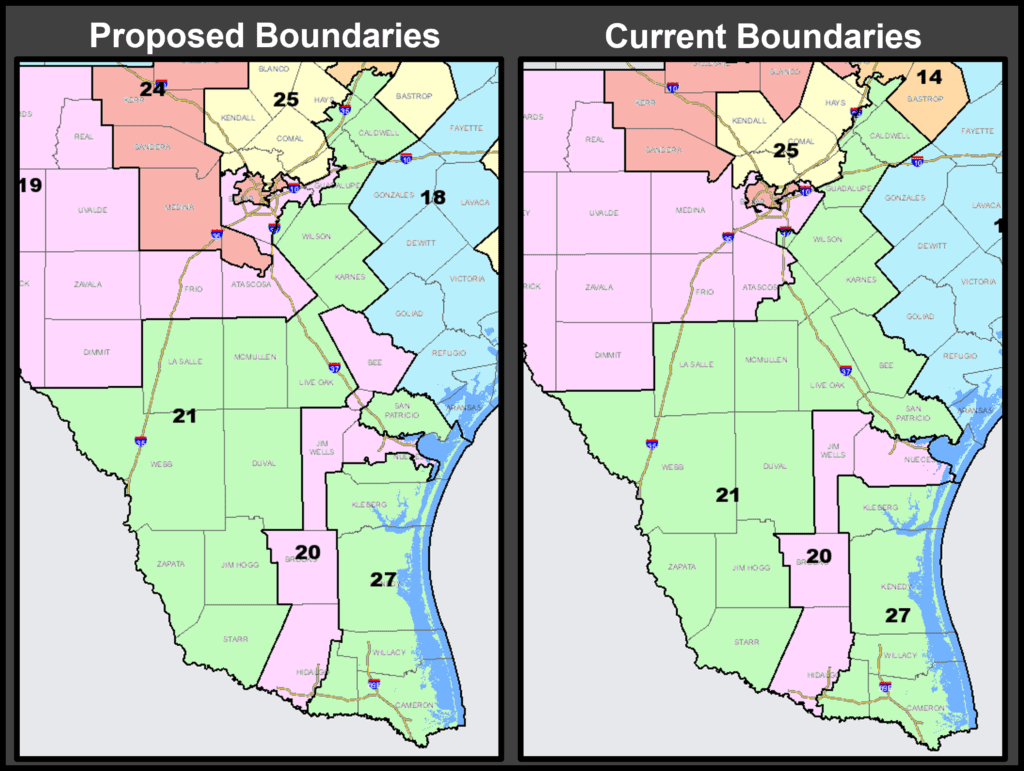
Senate District 20, currently represented by State Sen. Chuy Hinojosa (D–McAllen), has nominal proposed changes. Current boundaries include a portion of Hidalgo County and all of Brooks, Jim Wells, and Nueces counties. In the proposed map, the boundaries would instead include Brooks, Jim Wells, and Bee counties, as well as portions of Hidalgo, Nueces, and San Patricio counties.
Similarly, Senate District 27, currently represented by State Sen. Eddie Lucio Jr. (D–San Benito), sees minor proposed changes. The district currently includes Cameron, Willacy, and Kleberg counties as well as the remaining portion of Hidalgo County (shared with Senate District 20). The proposed map would add a portion of Nueces and San Patricio counties to the aforementioned list.
What is Next?
The Senate legislation was immediately referred to the Senate Special Committee on Redistricting Monday, and it has been scheduled for a public hearing on both Friday and Saturday of this week.
The proposed boundaries for Texas House districts have not yet been made public, and reports indicate that negotiations are still occurring between lawmakers in specific regions around the state.
During the ongoing third called special legislative session, the state Legislature is charged with drawing the maps for 38 U.S. congressional districts (which include two more than the last redistricting cycle), 31 state Senate districts, 150 state House districts, and 15 State Board of Education districts.
Almost undoubtedly, approved maps will be subject to immediate lawsuits. Notable, however, is that for the first time in more than 50 years, Texas is not subject to additional federal scrutiny under a process known as “preclearance.” As such, it is likely that the negotiations leading up to the public reveal of the maps have considered potential litigation in efforts to thwart anything that would stick.
The timing by which the maps are finally approved is important as well. During the second called special legislative session, lawmakers passed legislation that would allow for delayed candidate filing periods and primary elections depending on the final disposition of redistricting maps.
